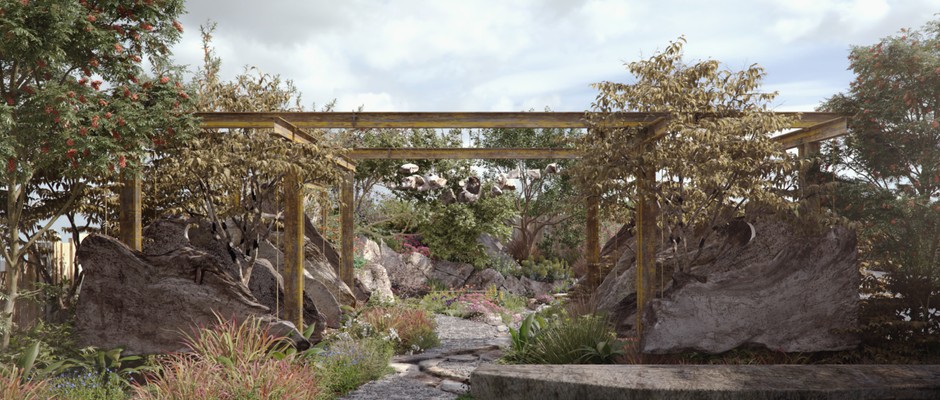
Chelsea Flower Show Main Show Gardens 2023: the full list
The full list of Main Avenue Show Gardens at the RHS Chelsea Flower Show 2023
There will be 12 main show gardens at RHS Chelsea Flower Show 2023, including gardens from Chelsea veterans such as Cleve West, Chris Beardshaw, Sarah Price and Paul Hervey-Brookes.
As with last year, many of the Show Gardens are funded by the recent initiative Project Giving Back.
Don't miss our piece on everything you need to know about Chelsea Flower Show 2023.
Chelsea Flower Show Gardens 2023
Centre for Mental Health’s The Balance Garden

Designers: Jonathan Davies and Steve Williams (Wild City Studio)
Sponsor: Project Giving Back/Centre for Mental Health
Contractor: Stewart Landscape Ltd.
Website: www.wildcitystudio.com
This garden explores the importance of inclusivity and affordability in creating authentic nature experiences in the urban landscape. It features crushed site waste as a growing medium; wildflowers, grasses and hardy shrubs that thrive in stressful environments; and sand piles and habitat layers for wildlife.
Large concrete pieces reclaimed from waste salvage make up a central area overlooking a clear pool. Suspended steel walkways allow movement through the space and access to the wild planting layers. At the heart of the garden is a ‘mushroom den’ made from a reclaimed steel-clad shipping container. The planting layers contour from wetland towards a denser, shadier canopy of food forestry and ‘edimentals’. The planting also highlights wildflowers and “weeds” as an important part of urban ecology.
The RBC Brewin Dolphin Garden
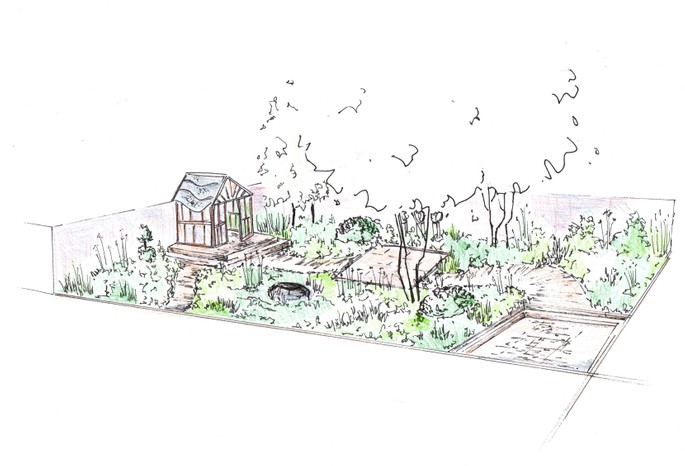
Designer: Paul Hervey-Brookes
Sponsor: RBC Brewin Dolphin
Contractor: GK Wilson
Website: www.paulherveybrookes.com
The garden is imagined as part of the home of a young couple who want to relax and enjoy spending time in an outdoor environment. This contemporary-style space has minimal hard landscaping, but features traditional flowering beds, which give a sense of a country garden. A hand-built oak pavilion forms the centre piece of the garden, while a series of three open spaces, intended for small gatherings, feel enclosed and will be submerged in planting.
Cottage garden plants form the backbone of the planting, with an informal mix of herbaceous perennials and structural shrubs.
Watch: Chelsea designers explain their 2023 gardens
The Centrepoint Garden
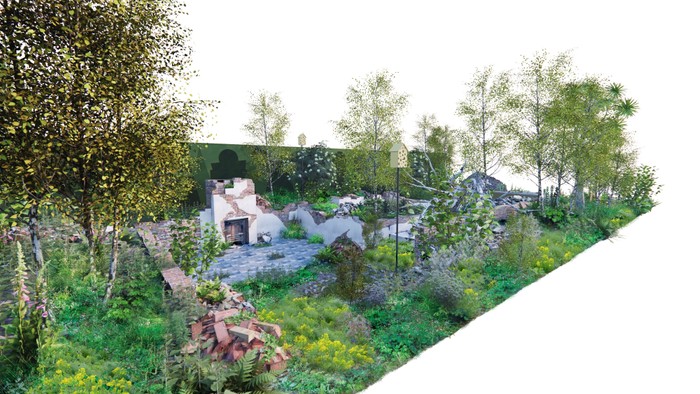
Designer: Cleve West
Sponsor: Project Giving Back/Centrepoint
Contractor: Crocus Ltd
Website: www.clevewest.com
This garden, for the UK’s leading youth homelessness charity, explores the notion of ‘home’ in several different ways. At its centre lies the remains of a Victorian townhouse that has fallen into decay. Nature has taken over the house, giving it a new lease of life and a sense of renewal and optimism. Low, fragmented walls indicate the footprint of the demolished house and an uprooted birch tree serve as a metaphor for displacement and being abandoned.
The naturalistic plantings of saplings and wildflowers co-exist with ornamentals and survivors from the imagined original domestic garden, such as Cordyline australis and Yucca gloriosa. ‘Self-seeded’ elder, hawthorn and birch will also feature with wildflowers, grasses, ferns and ornamentals.
The Fauna & Flora International Garden
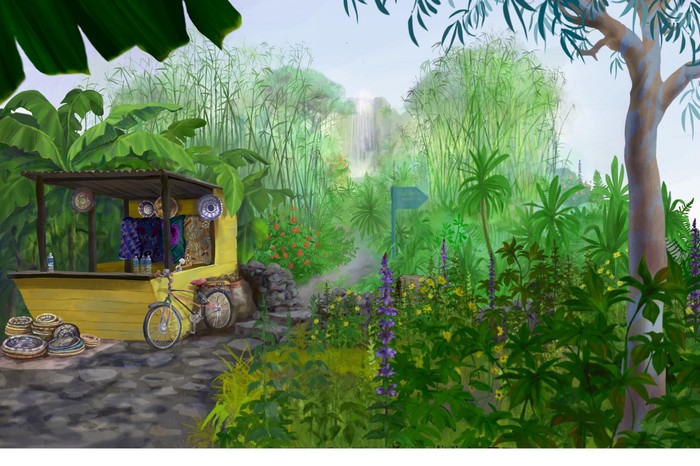
Designer: Jilayne Rickards
Sponsor: Project Giving Back/Fauna & Flora International
Contractor: Living Landscapes
Website: www.jilaynerickards.com
Celebrating the success of the International Gorilla Conservation Programme, at the behest of Sir David Attenborough, this garden maps the journey of an ecotourist on a gorilla trek, tracing a rough track through a succession of lush and changing landscapes, showcasing the familiar, unusual and spectacular plants found in the Afromontane Virunga area in Central Africa. Along the way is a medicinal garden shaded by eucalyptus and banana trees; a typical tourist kiosk selling local crafts; a true-to-life gorilla nest set amongst bamboo; and an entrancing waterfall and viewing rock surrounded by plants found only at high altitude.
Many plants are being sourced with help from The Eden Project in Cornwall where the garden will be re-located. Spathodea campanulata, an iconic tree from Central Africa, provides height and structure and Lobelia stuhlmannii, which is commonly found in gorilla habitat.
The garden also aims to highlight the importance of 'wild' patches in British gardens, showcasing the value that nettles, brambles and weeds have not only for animal habitats in Africa, but for insects and animals in UK gardens too.
Hoban Cultural Foundation: Land of Healing, Korean Mountain Light
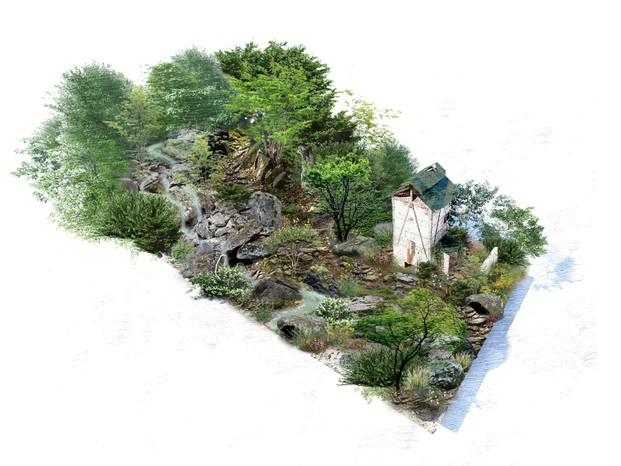
Designer: Jihae Hwang
Sponsor: Hoban Cultural Foundation
Contractor: The Landscape Tailor
This garden represents the medicinal herbal colony located in the eastern part of Jirisan, also known as ‘the mother mountain of Korea’. This area is home to 15,000 or more species of native medicinal plants. It is the last primeval forest of Jirisan where Korean native medicinal herbs, specialty plants and rare endangered alpine plants grow. This garden highlights how the recovery of the natural environment is key to the coexistence between humans and nature and how this can be made possible by minimising human interference. Key plants include Filipendula formosa and Maianthemum bicolor along with many other plants with medicinal properties which were nearly extinct but now thrive on Jiri mountain following rewilding work.
Myeloma UK: A Life Worth Living Garden
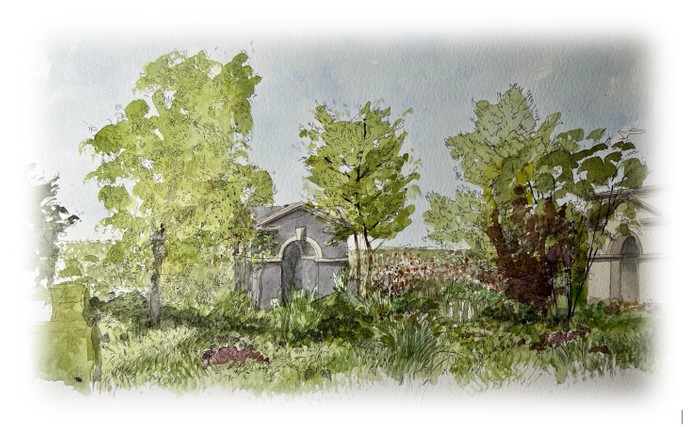
Designer: Chris Beardshaw
Sponsor: Project Giving Back/Myeloma UK
Contractor: Cultura
Website: www.chrisbeardshaw.com
This calm, immersive and unapologetically beautiful garden opens with a richly planted, structured and ordered border of sun-loving perennials with a backdrop of formal clipped yew, and leads on to a secluded shady woodland beyond. The passage initially appears unclear, but a charred oak path leads to the first of two neoclassic temples, nestling beneath the trees including Cercidiphyllum japonicum, Gingko biloba, Acer tataricum and varieties of Cornus kousa, decorated with a stone and moss labyrinth floor and a specially commissioned paper leaf and flower motif artwork. The second, more opulent temple features lavish seating and a suspended porcelain precious-metal leaf sculpture. Both temples feature reflective water pools.
The Nurture Landscapes Garden
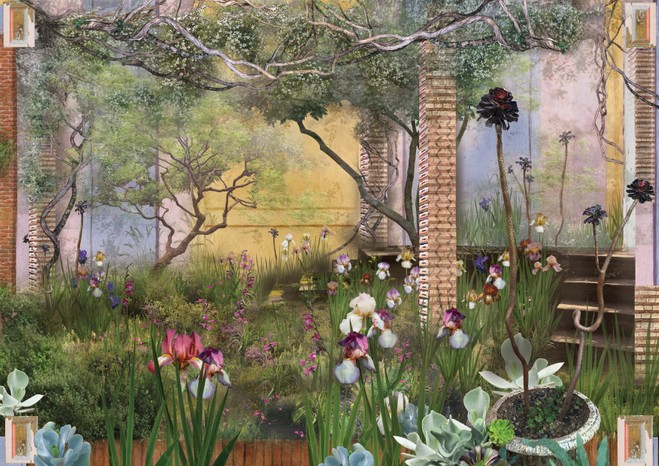
Designer: Sarah Price
Sponsor: Nurture Landscapes
Contractor: Crocus Ltd
Website: www.sarahpricelandscapes.com
British artist and plantsman Sir Cedric Morris was the inspiration for this garden, which is based on the plants he collected in the grounds of his 16th-century home, Benton End in Suffolk. This low-carbon garden takes traditional techniques that were found in Morris’ home, and reinterprets them for contemporary use, with locally sourced, sustainable materials. Climbers growing up and over supports frame pictorial-like compositions, whilst also creating seclusion and intrigue. Handcrafted furniture encourage relaxation and sociability as well as opportunities for observation of the garden.
The sword-like leaves of Benton irises contrast with looser, meadow-like planting and scrub. Mature trees, dead wood and saplings feature to represent the environmentally beneficial succession of woody plants within a mature garden.
Horatio’s Garden
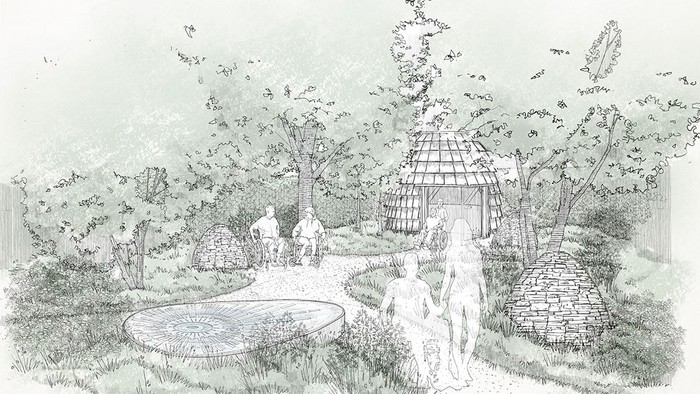
Designers: Charlotte Harris and Hugo Bugg
Sponsor: Project Giving Back/Horatio’s Garden
Contractor: Ryan Alexander Associates
Website: www.harrisbugg.com
The wheelchair-accessible garden for the spinal injuries charity will have a future permanent home at the Princess Royal Spinal Injuries Centre in Sheffield. The garden is a beautiful, immersive, restorative haven - the antithesis of a busy, clinical hospital environment and puts the requirements of people with mobility needs at its heart.
A dappled woodland edge opens out into a sunny glade, with tactile stone cairns to give rhythm and structure. Water adds a sensory experience, animates the garden and encourages wildlife. An organic and discreet garden pod structure provides a cocooning place for physical and emotional shelter.
The garden’s planting is influenced by the flora of the wooded valley sides that provided the essential timber for the forges and furnaces of the city of steel. It is also strongly influenced by the ways of seeing and experiencing for patients, often interacting from very different vantage points - from a bed, looking up or from a wheelchair at a different level.
The tree canopy will be complemented by a beautiful lower storey of shrubs, perennials and ephemerals. Lime greens, pinks, purples, bronzes, creams, pale yellows and oranges will be the colour palette.
The Royal Entomological Society Garden
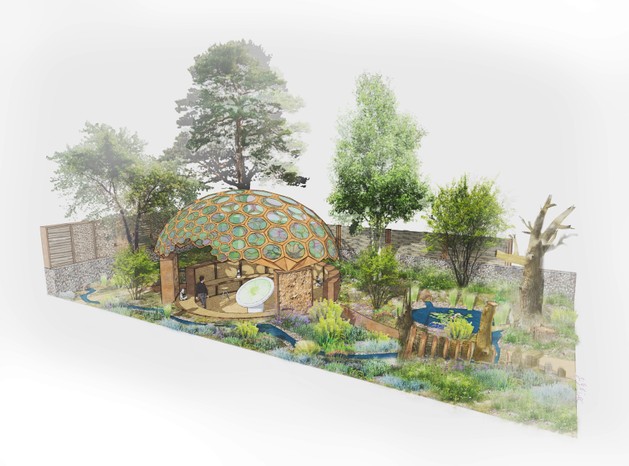
Designer: Tom Massey
Sponsor: Project Giving Back/The Royal Entomological Society
Contractor: Landscape Associates
Website: www.tommassey.co.uk
Diverse topography across this garden - from rammed earth floors, hoggin pathways and dead wood, to piles of rubble, bare sand and gabion walls - provide numerous and varied habitats for insects. Water in still pools and flowing streams provides additional important insect habitats and added interest to the aesthetic and soundscape of the garden.
A dead tree ‘sculpture’, cut into rings elevated on steel poles, ‘floats’ over biodiverse planting - the open structure allowing ease of access for study. A standing dead tree and tree stump provide further sculptural habitat and visitor interest.
An outdoor lab, built into a hillside, takes visitors down into the landscape, offering an ‘insect eye view’ and a space in which to study. A movable projector screen links to the microscopes in the lab, giving the opportunity to show enlarged insects at magnified scale, revealing their fascinating morphology and offering opportunities for education. The lab’s roof structure is inspired by a compound insect eye and will provide ‘modules’ permeable to insects, providing an accessible opportunity for on-site research, study and identification.
Planting has been designed for a wide range of beneficial insects and with our changing climate in mind. At the front of the garden, colourful and textural drought resistant planting - mulched with mixed recycled aggregates - is representative of plants found on brownfield sites.
Naturalistic planting behind the lab evokes native woodland edge meadows, buzzing with insect life. The planting will contain a mix of native and non-native plants, extending the garden’s flowering season and providing a mix of food sources for pollinators and other beneficial insects.
The Samaritans’ Listening Garden
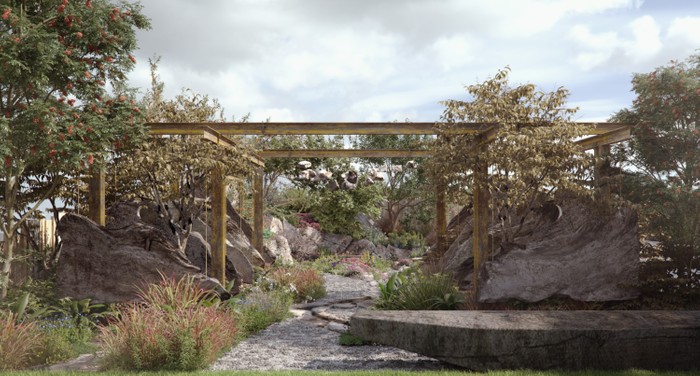
Designer: Darren Hawkes
Sponsor: Project Giving Back/Samaritans
Contractor: Landform Consultants Ltd.
Website: darrenhawkeslandscapes.co.uk
The Listening Garden is intended to be a safe and secure space where people can feel comfortable sharing their internal struggles. The garden creates an authentic representation of the journey people struggling with their emotions will go on - from an area that feels chaotic and overwhelming, through to a calming and tranquil space.
Sculptural oak seats serve as places to talk and listen or reflect on conversations. Other elements that appear rough or uncomfortable can also be beautifully honed, artistic and valuable. Parts of the garden will go on to create a permanent garden at Samaritans in Truro, and other plants will be sent to further Samaritans sites.
The feature tree, Ulmus × hollandica ‘Jacqueline Hillier’, is used for its unpredictable habit, its otherworldliness. Aralia, Zanthoxylum, Rosa and Corokia are used as attempts to make the visitor feel hesitant about entering the garden, aware of the spikes and thorns that surround them. The plant forms gradually soften into a sunken area with Stipa, cultivated rose, × Halimiocistus and Aralia continentalis mixed with perennials.
The Savills Garden
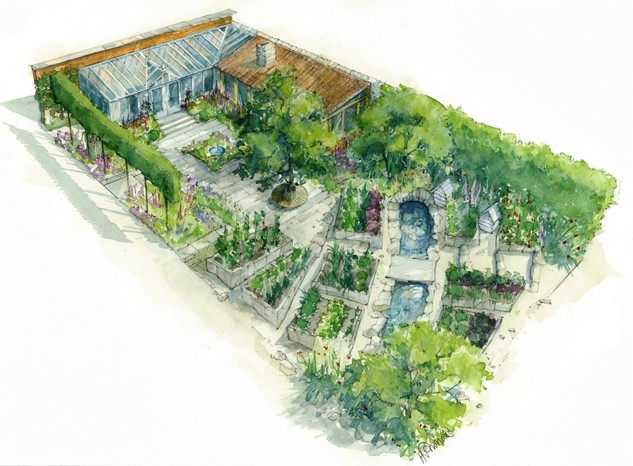
Designer: Mark Gregory
Sponsor: Savills
Contractor: Landform Consultants Ltd.
Website: www.landformconsultants.co.uk
The Savills Garden will evoke the experience of stepping into the intimate walled-garden, seasonal potager setting of a country hotel. Combining beautiful ornamental and edible planting, this ‘edimentals’ garden will be both sanctuary and source of the very best in flavours and nutrition.
At the heart of the garden is a working kitchen and adjoining dining area, where guests can enjoy meals prepared with ingredients from the potager and walled garden beyond – a ‘from plot-to-plate’ experience, cementing the relationship between grower, guests and chef.
The planting style is formal with pleached trees and topiary elements, but also areas with a more naturalistic-style and useable vegetables and herbs in raised beds. The garden contains a wide selection of edibles, featuring new varieties of vegetables, such as leafy crops. Along with companion planting, herbs, garnishes and edible flowers will be used to dress dishes and show how diverse planting can be used to great effect. Whites, soft pinks and blues, with touches of lime and silver dominate the formal planting scheme adjacent to the buildings.
Memoria & GreenAcres Transcendence Garden

Designer: Gavin McWilliam and Andrew Wilson
Sponsor: Darwin Alternative Investment Management Ltd.
Contractor: The Outdoor Room
Website: mcwilliamstudio.com
The concept for this garden relates to end-of-life experience, with the intention of creating a spiritual and uplifting space to help the bereaved feel a sense of calm and profound reflection during their grieving process. The design delivers a physical downward movement whilst simultaneously creating a sensation of uplift through trees and a cantilevered canopy. The gravel planting features Salvia, Verbascum and Linaria, contrasting with darker evergreen mounds or cushions of yew.
Head to our Chelsea Flower Show hub page for all the latest coverage
Authors

Niwaki bundle worth £57 when you subscribe
Subscribe to Gardens Illustrated magazine and claim your Niwaki bundle worth £57
*UK only
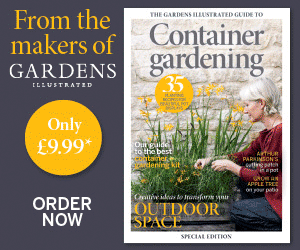
Container Gardening Special Edition
The Gardens Illustrated Guide to Container Gardening.
In this special edition, discover colourful flower combinations and seasonal planting schemes for pots designed by leading plantspeople, and essential know-how for container gardening success. Just £9.99 inc UK p&pBy entering your details, you are agreeing to our terms and conditions and privacy policy. You can unsubscribe at any time.
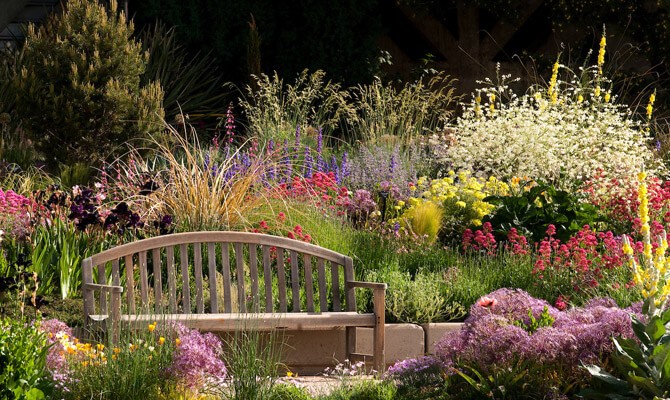
Gardens of the Globe
From botanical wonders in Australia to tranquil havens closer to home in Ireland, let this guide help you to discover some of the most glorious gardens around the world
By entering your details, you are agreeing to our terms and conditions and privacy policy. You can unsubscribe at any time.






